
-
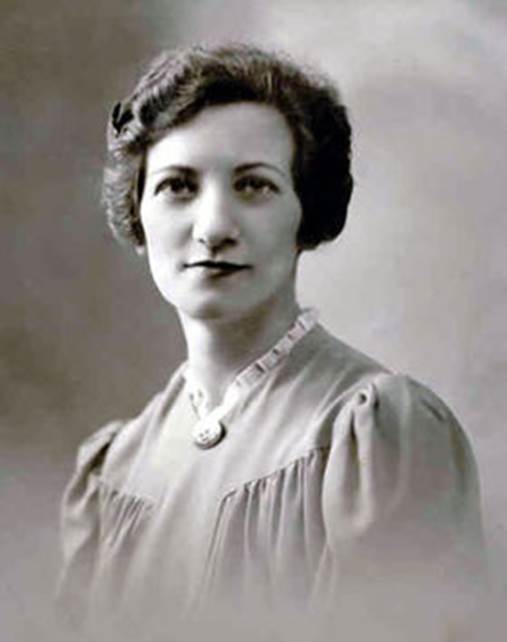 Léa Roback.Photo Credit : Jewish Public Library - Archives
Léa Roback.Photo Credit : Jewish Public Library - Archives -
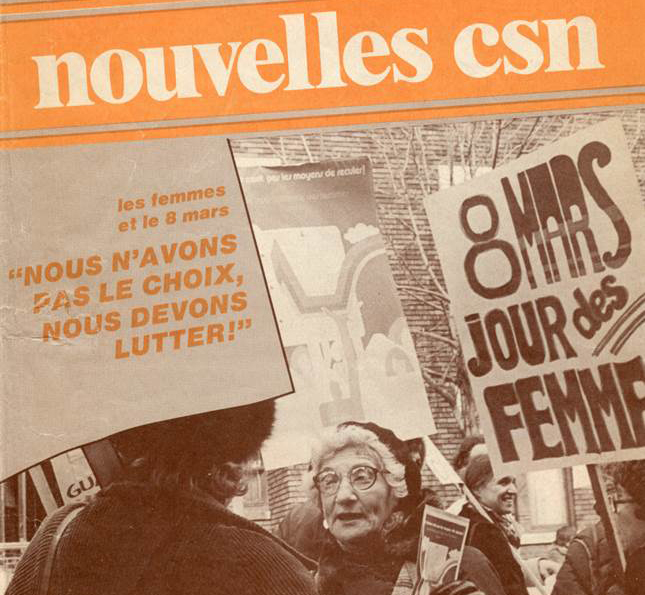 Léa Roback on the cover of Nouvelles CSN, March 11th (1982).Photo Credit : Claire Beaugrand-Champagne
Léa Roback on the cover of Nouvelles CSN, March 11th (1982).Photo Credit : Claire Beaugrand-Champagne -
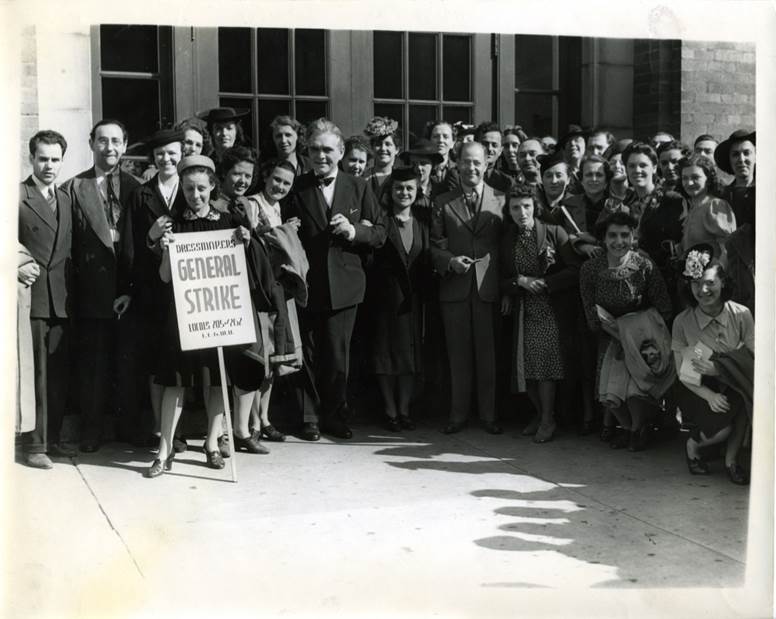 Strike by the Dressmaker's Union, local 262, ILGWU, Montreal (1930s).Photo Credit : Jewish Public Library - Archives
Strike by the Dressmaker's Union, local 262, ILGWU, Montreal (1930s).Photo Credit : Jewish Public Library - Archives -
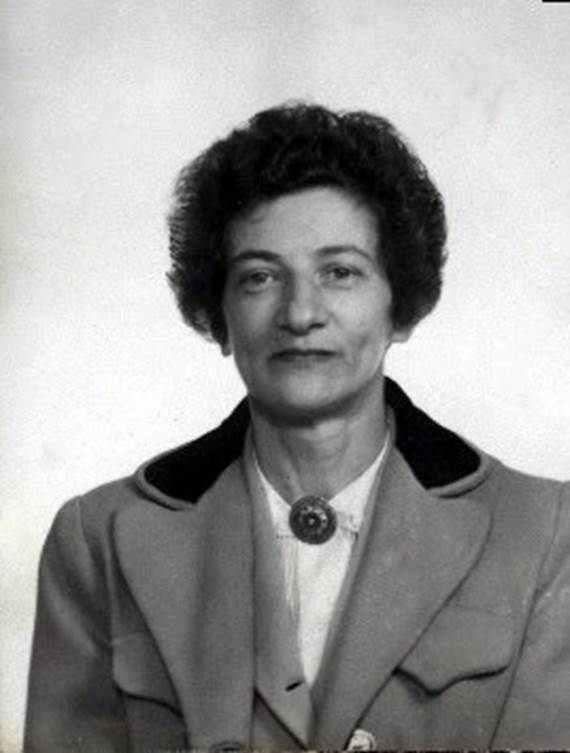 Léa Roback.Photo Credit : Jewish Public Library - Archives
Léa Roback.Photo Credit : Jewish Public Library - Archives -
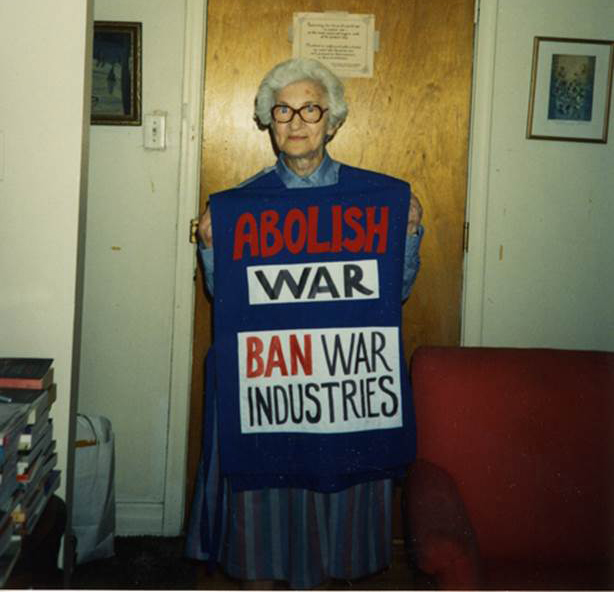 Léa with a banner 'Abolish war; Ban on war industries'.Photo Credit : Jewish Public Library - Archives
Léa with a banner 'Abolish war; Ban on war industries'.Photo Credit : Jewish Public Library - Archives -
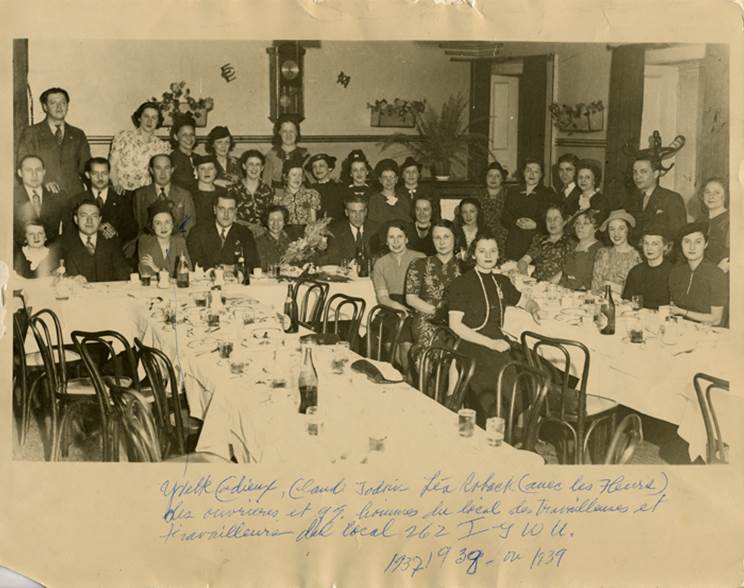 Dressmaker's Union, local 262, ILGWU, Montreal (1937).Photo Credit : Jewish Public Library - Archives
Dressmaker's Union, local 262, ILGWU, Montreal (1937).Photo Credit : Jewish Public Library - Archives -
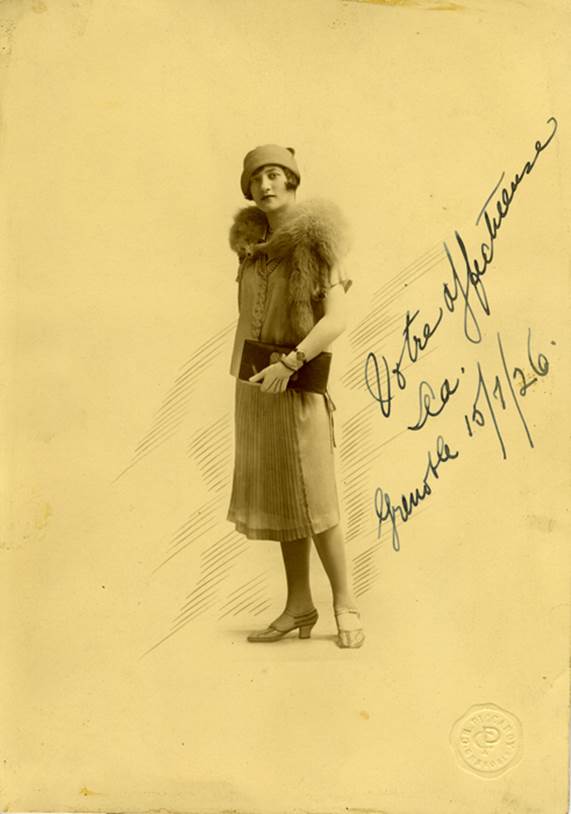 Léa Roback in Grenoble (1926).Photo Credit : Jewish Public Library - Archives
Léa Roback in Grenoble (1926).Photo Credit : Jewish Public Library - Archives -
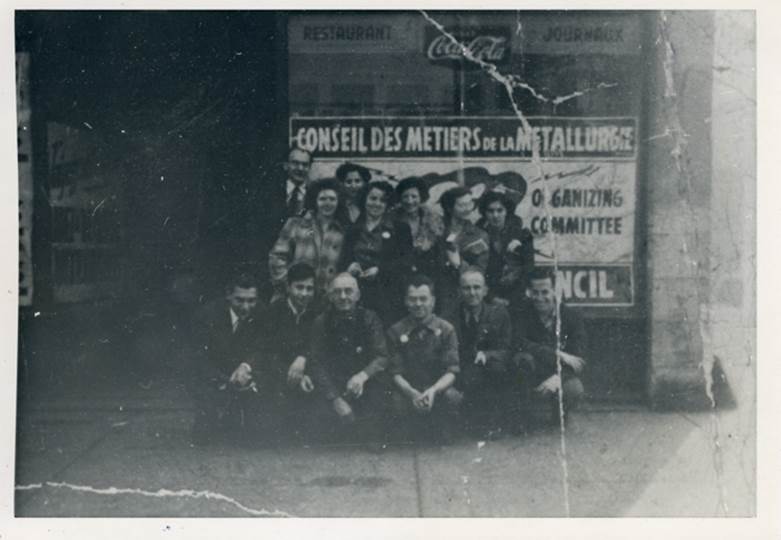 Exterior, Organization Committee at RCA Victor, Montreal. Léa Roback standing third from right wearing coat with fur collar, 1941-1943.Photo Credit : Jewish Public Library - Archives
Exterior, Organization Committee at RCA Victor, Montreal. Léa Roback standing third from right wearing coat with fur collar, 1941-1943.Photo Credit : Jewish Public Library - Archives -
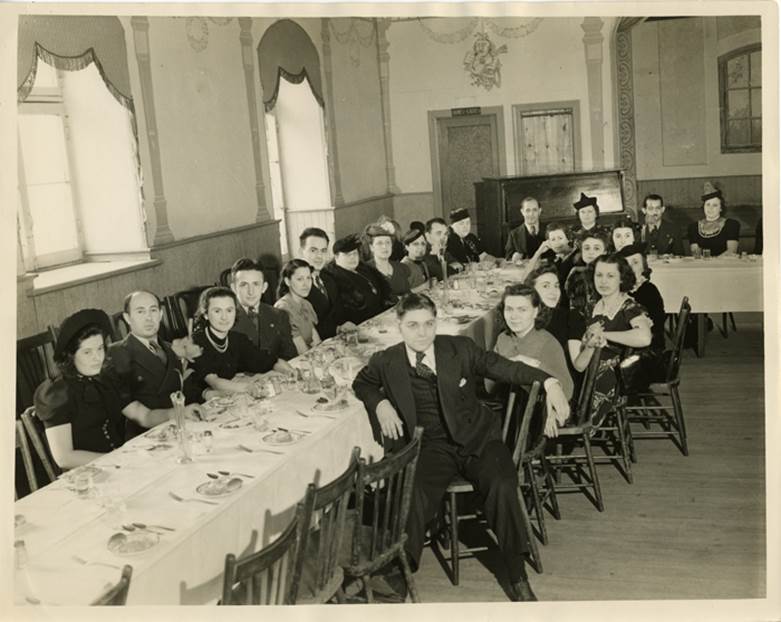 The ILGWU Local with 252 members.Photo Credit : Jewish Public Library - Archives
The ILGWU Local with 252 members.Photo Credit : Jewish Public Library - Archives
Léa Roback
Léa Roback was a famed human rights and social justice activist, feminist and labour organizer in Quebec.
Roback was the second of Polish immigrants Fanny and Moses Roback’s nine children. Born in Montreal, she spent her childhood in Beauport, Quebec, where her parents ran a general store. The observant Jewish family spoke Yiddish at home, and French or English otherwise. Roback was able to switch back and forth freely between languages, a skill that proved useful in her work with labour organizations. When she was 14, the family returned to Montreal, and she began working in the city’s factories two years later. It was at this point that she became acutely aware of the inequality between Montreal’s affluent English-speaking families and the mostly French and Jewish working class.
Roback spent time in Berlin and the USSR before returning to Montreal in 1932, and finding work as a youth group director at the Young Women’s Hebrew Association, where her mentor was Saidye Bronfman (Sam Bronfman’s wife). In 1935, she managed the Modern Bookshop on Bleury Street, the first Marxist bookstore in Quebec, which became a gathering place for local radicals. That same year, she coordinated Fred Rose‘s bid for election; eight years later, he became the first communist elected to the House of Commons.
Roback was a fixture on the streets, protesting for a variety of interrelated movements. In 1936, she was recruited by legendary women’s suffrage leader, Thérèse Casgrain, to support her work in obtaining the vote for women in Quebec as a founder in La Voix des Femmes. In 1937, Roback was a leader – along with organizers such as Rose Pesotta and Bernard Shane – in orchestrating 5,000 women walking off the job from the garment industry factories of Montreal for three weeks to improve work conditions; this led to the creation of the International Ladies Garment Workers’ Union (ILGWU), Local 262. During the war years, she began working for the Radio Corporation of America (RCA Victor) and became an organizer for the United Electrical Workers, where she was able to acquire the first union contract for 4,000 workers. In her later years, she left the Communist Party, but continued to organize for causes including abortion rights, anti-racism, housing access, education, pay equity, South African apartheid and the Vietnam War. Her commitment to social justice and human rights inspired her work with numerous organizations, including anti-nuclear and anti-war groups, and Québec Aid to the Partially Sighted.
Roback’s dramatic life was the subject of filmmaker Sophie Bissonnette’s 1991 documentary, on Léa Roback: Des Lumières dans la grande Noirceur (A Vision in the Darkness) with Productions Contre-Jour, and her interviews with Madeleine Parent were published by Nicole Lacelle in 1988, by Éditions du remue-ménage.
There is a street bearing Roback’s name not far from the site of the original Radio Corporation of America plant in St-Henri, Montreal.
Special thanks to the Jewish Public Library Archives.
Learn More:
http://www.fondationlearoback.org/bioen.htm
https://www.youtube.com/watch?v=8cSlMHrWPzQ

-
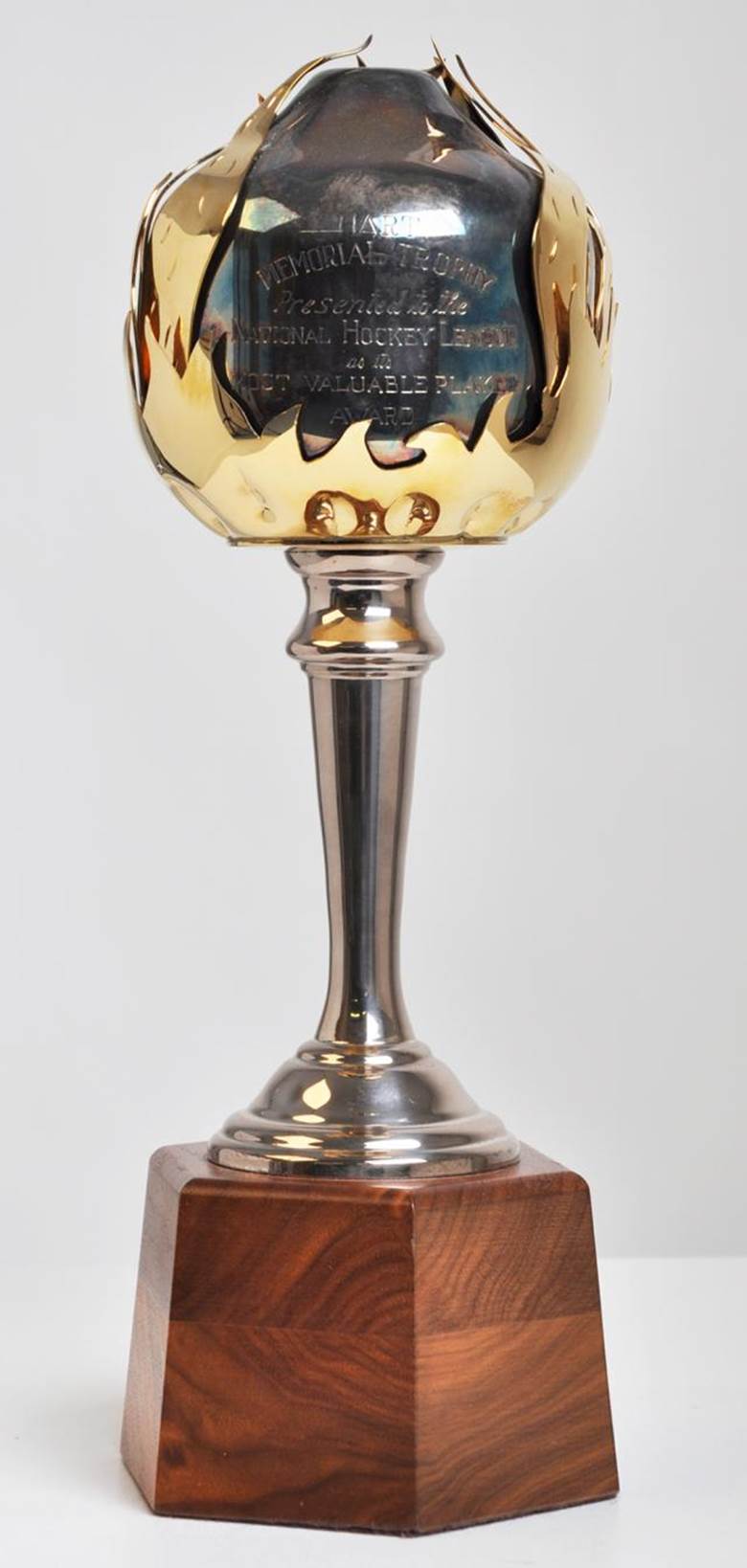 The Cecil Hart Memorial TrophyPhoto Credit : Classic Auctions, Inc.
The Cecil Hart Memorial TrophyPhoto Credit : Classic Auctions, Inc. -
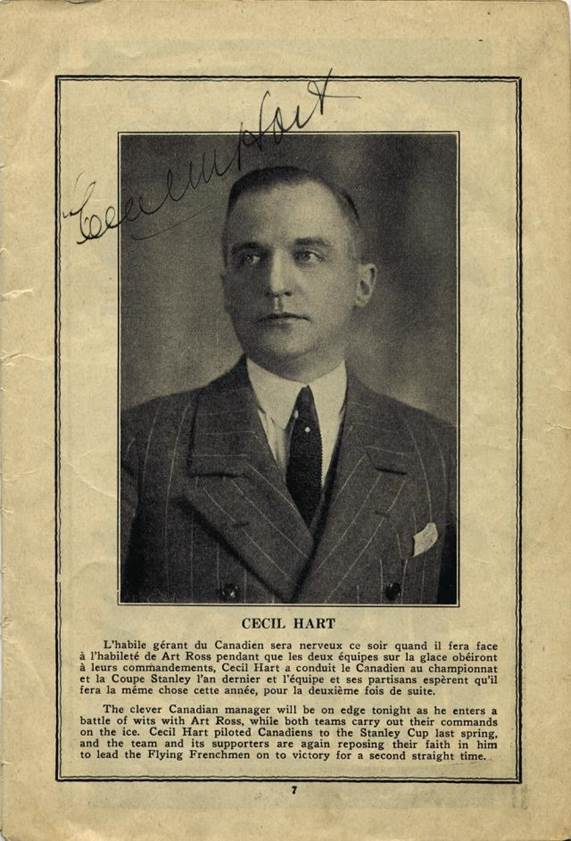 Leaflet describing Cecil Hart's feelings prior to a Stanley Cup game (1920s).Photo Credit : Classic Auctions, Inc.
Leaflet describing Cecil Hart's feelings prior to a Stanley Cup game (1920s).Photo Credit : Classic Auctions, Inc. -
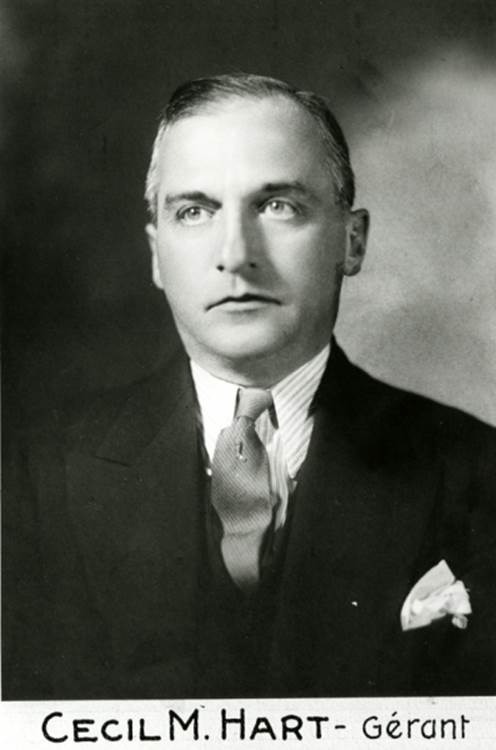 Cecil Hart.Photo Credit : Club de hockey Canadien inc.
Cecil Hart.Photo Credit : Club de hockey Canadien inc. -
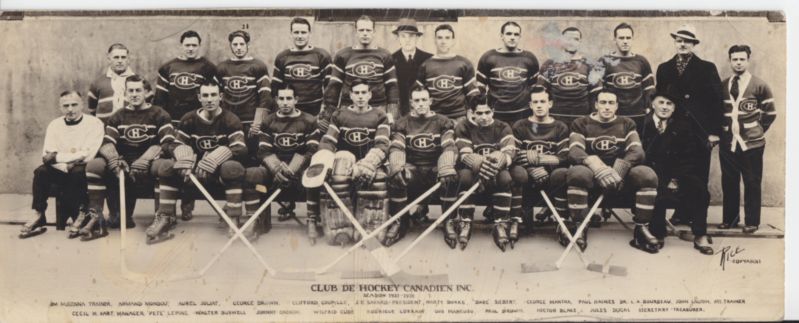 The Canadiens, 1937-1938.Photo Credit : Hockey Hall of Fame
The Canadiens, 1937-1938.Photo Credit : Hockey Hall of Fame
Cecil Hart
Cecil Hart, a direct descendant of Canada’s first Jewish settler, Aaron Hart, is best known as the famed head coach of the Montreal Canadiens in the 1920s and 30s, and the namesake of the Hart Memorial Trophy, donated by his father Dr. David Hart.
Hart was born in Bedford, Quebec, in the Montéregie region. He became the coach of the Montreal Canadiens for the first time during the 1926-27 season. The previous season, they had finished in last place. But by the 1929-30 season, Hart had led them to the championship, with back-to-back Stanley Cup victories in both 1929-30 and 1930-31. Hart was fired in 1932, but in 1936, he was brought back by popular demand, to rebuild the team.
Known as one of the NHL’s greatest coaches at the time, Hart’s record was unmatched. Under his direction, the Montreal Canadiens became one of sport’s leading franchises.
The Hart Memorial Trophy, given annually to the Most Valuable Player in the National Hockey League, has been won by sixteen Montreal Canadiens players. In 1992, Hart was inducted into the International Jewish Sports Hall of Fame.
Learn More:
https://en.wikipedia.org/wiki/Cecil_Hart
http://jewsinsports.org/profile.asp?sport=hockey&ID=3
http://imjm.ca/location/2178

-
 Photo Credit : © CRILA
Photo Credit : © CRILA -
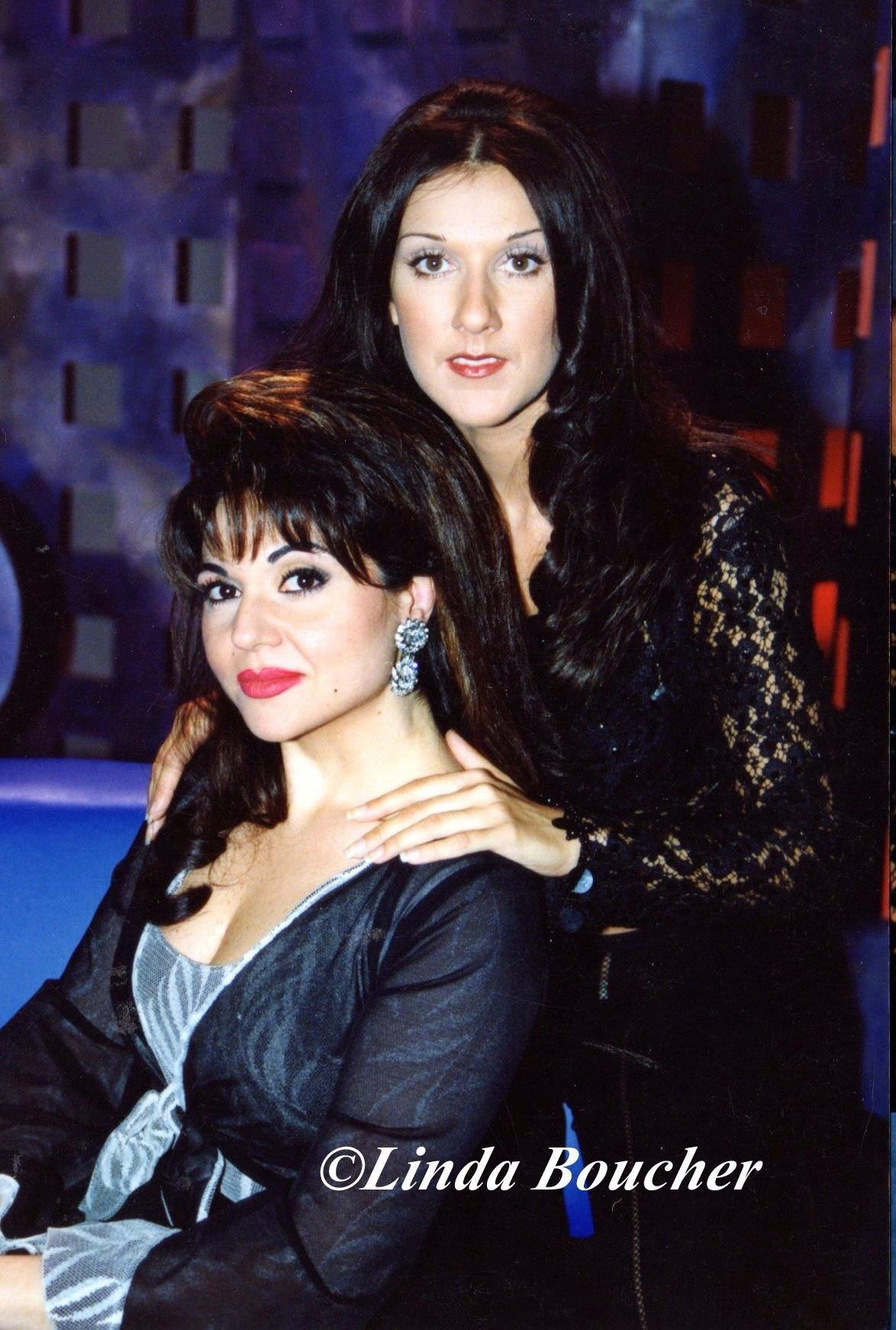 Photo Credit : Sonia Benezra, personal archives
Photo Credit : Sonia Benezra, personal archives -
 Photo Credit : Sonia Benezra, personal archives
Photo Credit : Sonia Benezra, personal archives - https://www.youtube.com/watch?v=_wmtbPoVb0s
- https://www.youtube.com/watch?v=vUqW9nKoOjc
-
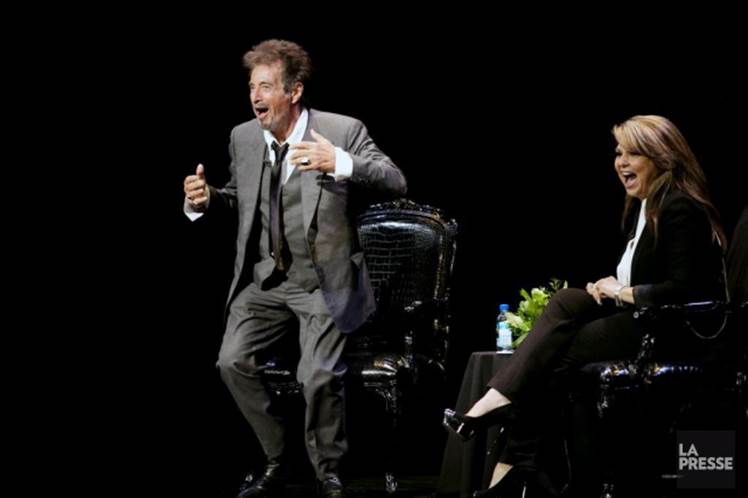 Photo Credit : Sonia Benezra, personal archives
Photo Credit : Sonia Benezra, personal archives -
 Photo Credit : Sonia Benezra, personal archives
Photo Credit : Sonia Benezra, personal archives
Sonia Benezra
Deemed “Quebec’s Barbara Walters,” Sonia Benezra is a bilingual Canadian TV and radio interviewer, television personality and actress, best known for her work on MusiquePlus.
Benezra was born in Montreal to an allophone Sephardic Jewish family from Morocco and Spain. She graduated from Concordia University with a degree in theatre, and began her career in television and popular media. However, it wasn’t until she had a battle with a Montreal theatre company over whether her ethnicity was right for a specific part, that she was catapulted to fame. Benezra soon found herself being discussed in Canadian journalist and radio broadcaster Tommy Schnurmacher’s column in the Montreal Gazette. Soon afterwards, Montreal-born founder of Toronto-based MuchMusic, Moses Znaimer, contacted the aspiring actress. One screen test later, Benezra was deemed the first female hire for MusiquePlus, MuchMusic’s Quebec-affiliated branch.
Equipped with a photographic memory and a penchant for languages, Benezra became one of the first North African faces in popular Quebec media. She has interviewed major stars like Leonard Cohen, Al Pacino and Sting. Benezra soon became a household name in Montreal, producing more than 200 shows per year for MusiquePlus, with over a million viewers per show.
Today, Benezra continues to work in both French and English-speaking Quebecois media. Her bubbly voice, exuberant personality and widespread influence are now an inseparable part of popular culture in Quebec.
Learn More:
http://www.lapresse.ca/arts/201506/08/01-4876169-al-pacino-a-coeur-ouvert.php
http://www.canada.com/montrealgazette/news/arts/story.html?id=86a6377f-09b3-4668-8205-854b7d6f3016
Quebec TV ‘outsider’ beat back detractors to become vee-jay star
https://www.youtube.com/watch?v=_wmtbPoVb0s
https://www.youtube.com/watch?v=vUqW9nKoOjc


-
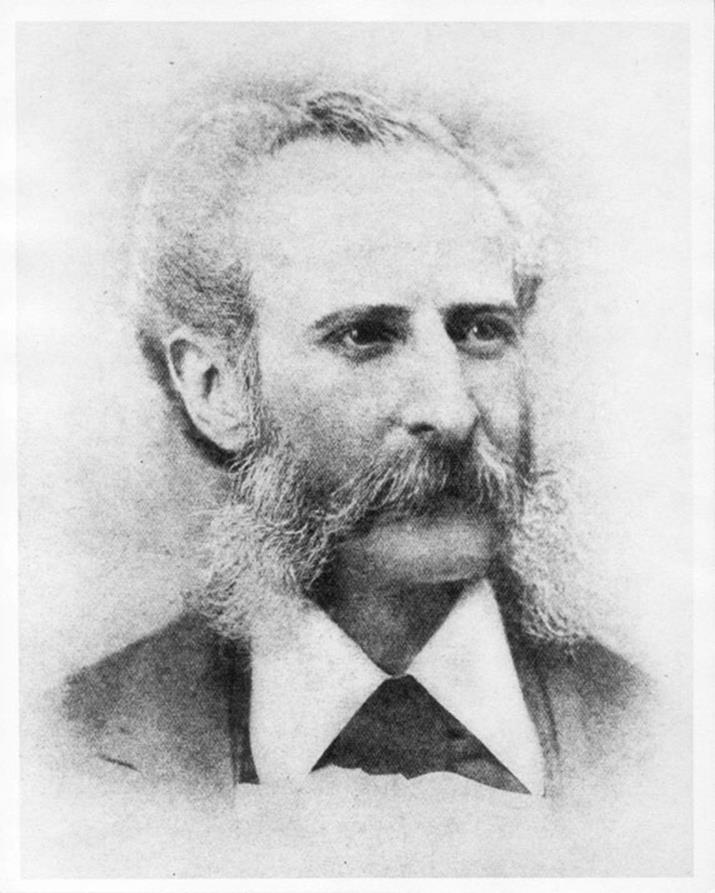 Sigismund Mohr –n.dPhoto Credit : The Bell Canada Historical Collection
Sigismund Mohr –n.dPhoto Credit : The Bell Canada Historical Collection -
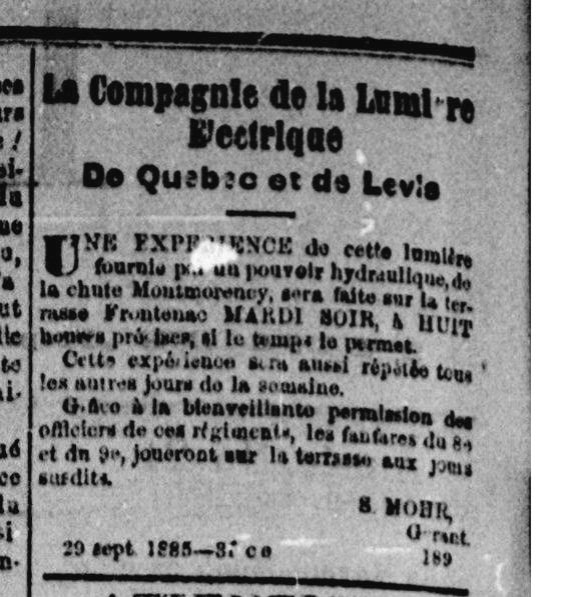 Article written by Sigismund Mohr for Le Canadien, 30 septembre 1885.Photo Credit : Vicky Lapointe
Article written by Sigismund Mohr for Le Canadien, 30 septembre 1885.Photo Credit : Vicky Lapointe -
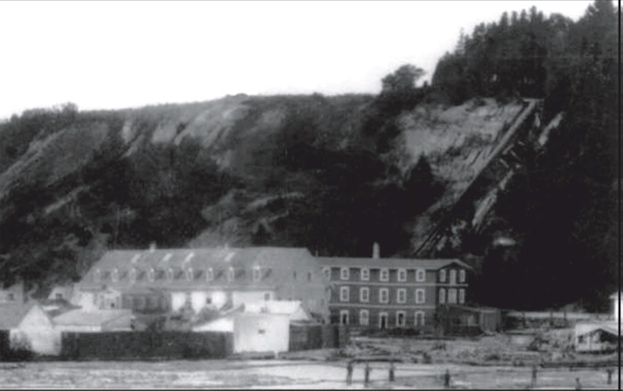 The Montmorency Falls hydroelectric station, constructed largely due to the efforts of Sigismund Mohr (1885).Photo Credit : The Quebec Anglophone Heritage Network
The Montmorency Falls hydroelectric station, constructed largely due to the efforts of Sigismund Mohr (1885).Photo Credit : The Quebec Anglophone Heritage Network -
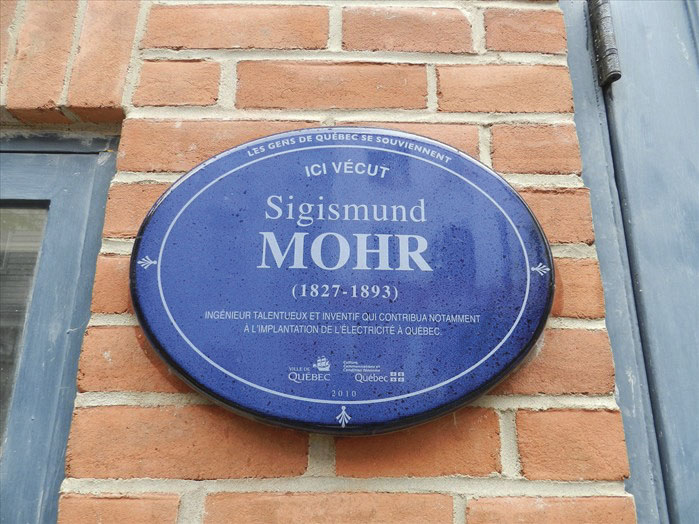 Plaque for Sigismund Mohr in Quebec City, Canada, that reads…“Talented and inventive engineer who contributed mainly to the electricity in Quebec.”Photo Credit : Plaques Canada
Plaque for Sigismund Mohr in Quebec City, Canada, that reads…“Talented and inventive engineer who contributed mainly to the electricity in Quebec.”Photo Credit : Plaques Canada
Sigismund Mohr
Sigismund Mohr was an engineer credited with discovering hydro-electricity, creating the first urban electrical grid, and introducing telephones to Quebec City.
Mohr was born in Wroclaw, Poland and came to Quebec City around 1871. He was granted the exclusive rights for seven years to establish a telegraph company in Quebec, which he did in 1876, called City District Telegraph Company. During this time, he also introduced telephones to Quebec City. In fact, he was convicted of creating “public obstacles” for putting up telephone poles in Buade Street in Quebec City. As Alexander Graham Bell’s telephone became increasingly popular, Mohr’s company won the province-wide rights to the invention. After successfully introducing telephones to Quebec, Mohr eventually became an agent of the newly created Bell Telephone Company of Canada.
Mohr then turned his attention to electrical power. On September 29, 1885, the Compagnie de lumière électrique de Québec et Lévis lit up Terrasse Dufferin by transporting the “fluid” created by Montmorency Falls and, as further described in le Canadien, “by means of an electric bell, the appearance of the terrace was transformed as if by a magic wand.” Once Mohr showed how he could stop and instantaneously restart the electrical current, people clamoured for the installation of electricity in their homes.
In November of 1893, Mohr caught influenza while trying to restore a damaged power line and died shortly thereafter, leaving a widow and six children, one of whom, Eugene Phillip, managed the company, overseeing Brooklyn’s telephone and electrical infrastructure.
Learn More:
http://www.ville.quebec.qc.ca/culture_patrimoine/patrimoine/epigraphes/epigraphes_fiche_mohr.asp
http://www.waymarking.com/waymarks/WMMN7F_Plaque_bleue_de_Sigismund_Mohr_Qubec_Qc_Canada
http://qahn.org/files/quebecanglophoneheritagenetwork/documents/qhn/QHN%20Sept-Oct%202008_web%20edition.pdf

-
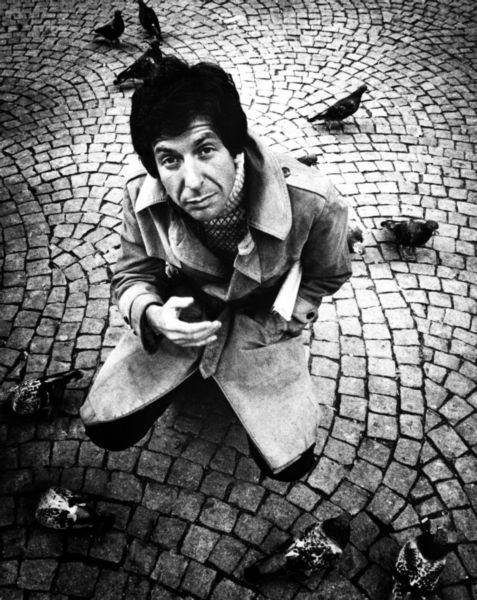 Leonard Cohen.Photo Credit : Getty Images
Leonard Cohen.Photo Credit : Getty Images -
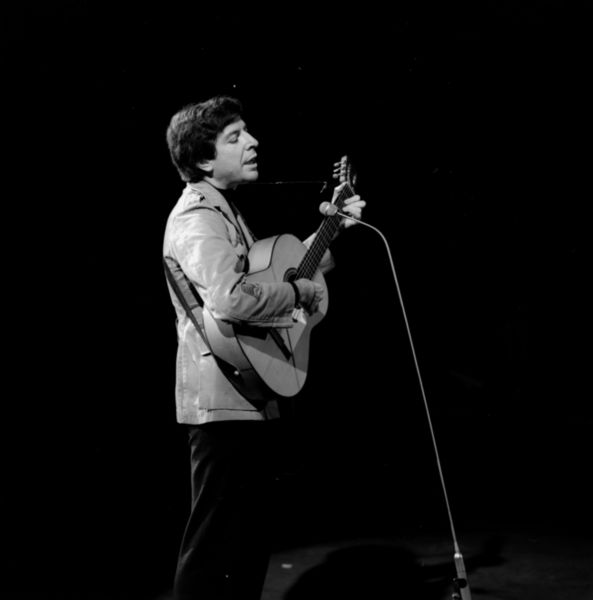 Leonard Cohen.Photo Credit : CBC Still Photo Collection
Leonard Cohen.Photo Credit : CBC Still Photo Collection -
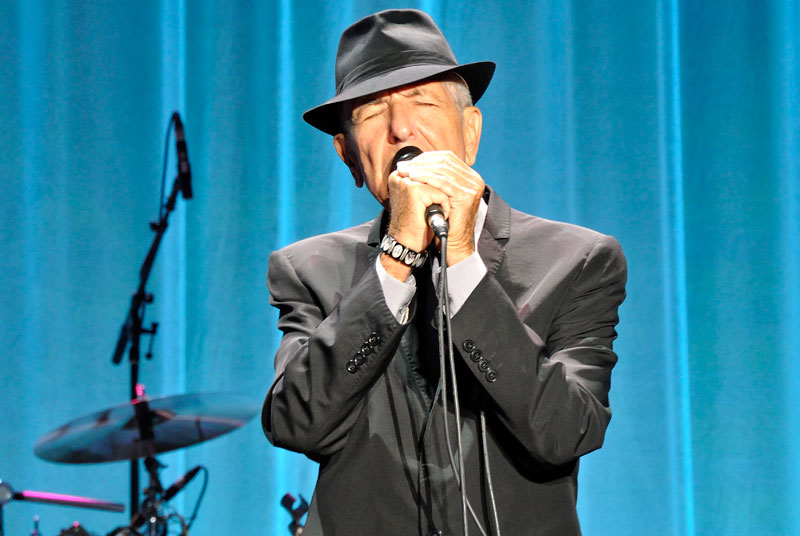 Cohen at a 2013 concert.Photo Credit : Takahiro Kyono
Cohen at a 2013 concert.Photo Credit : Takahiro Kyono -
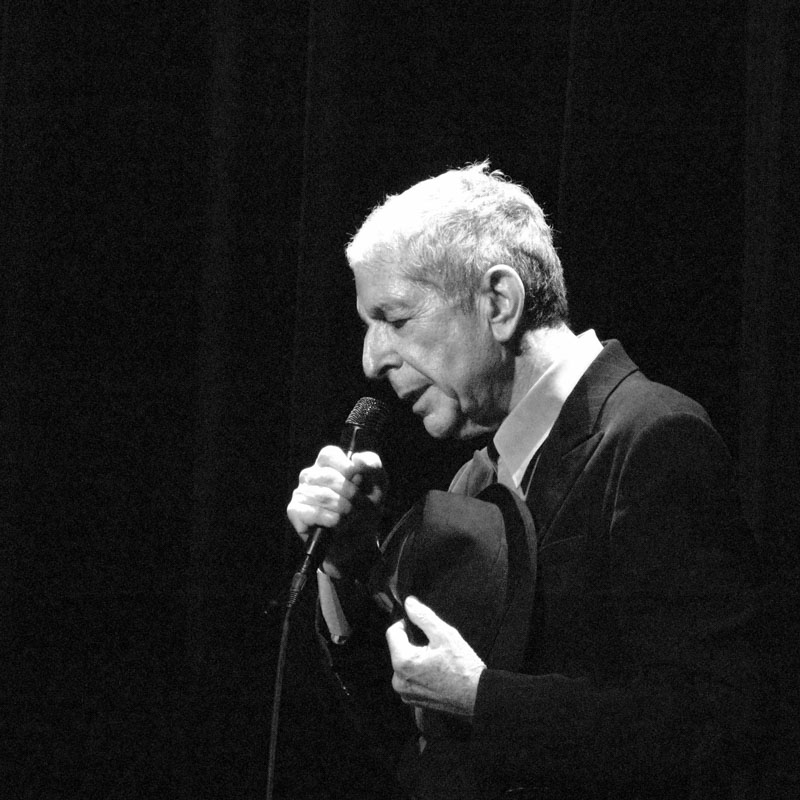 Cohen at a 2008 concert.Photo Credit : Rama
Cohen at a 2008 concert.Photo Credit : Rama -
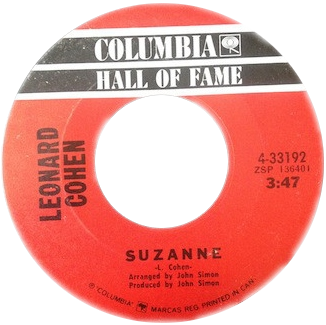 One of Leonard Cohen’s most famous singles – Suzanne, rereleased in 1970.Photo Credit : Public Commons
One of Leonard Cohen’s most famous singles – Suzanne, rereleased in 1970.Photo Credit : Public Commons -
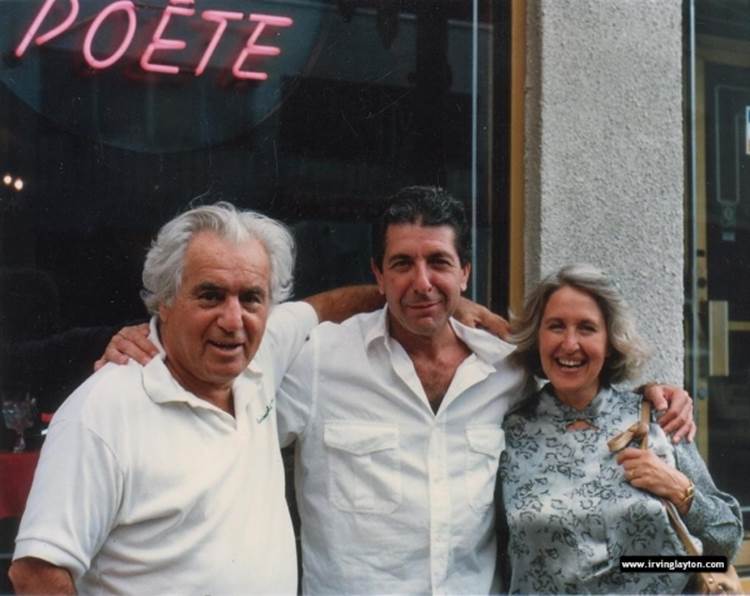 Leonard Cohen, with his mentor and friend, Irving Layton, ca. 1990.Photo Credit : irvinglayton.com
Leonard Cohen, with his mentor and friend, Irving Layton, ca. 1990.Photo Credit : irvinglayton.com -
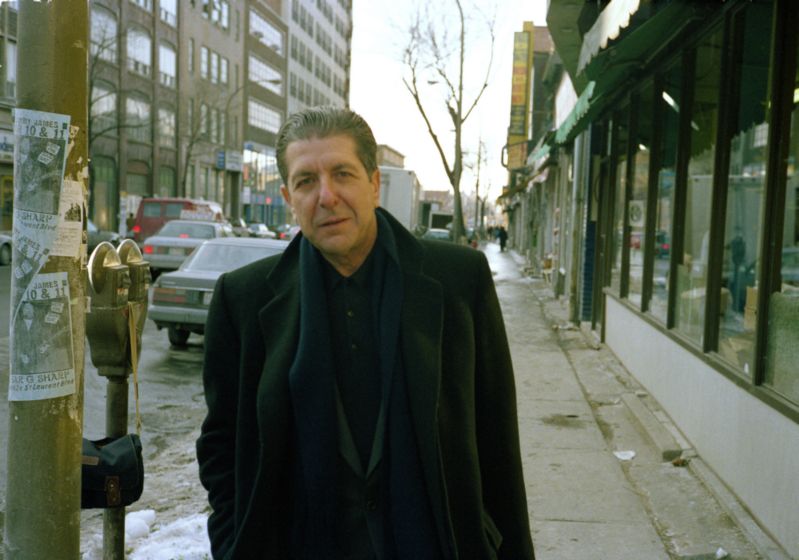 Leonard Cohen.Photo Credit : CBC Still Photo Collection
Leonard Cohen.Photo Credit : CBC Still Photo Collection
Leonard Cohen
Leonard Cohen was an iconic author, poet and musician.
Cohen was born to a prosperous Jewish family in Westmount. His grandfather, Lyon Cohen, was the owner of the successful men’s clothing manufacturing firm, the Freedman Company, and was perhaps the Jewish community’s foremost leader during the early decades of the 20th century. His father, Nathan Cohen, died when Cohen was just nine years old, leaving him under the care of his Russian-born mother, Masha, as the family became more dependent on the support of his father’s brothers. Cohen attended Roslyn School and then Westmount High School, while also going to Hebrew school and becoming a bar mitzvah at the Shaar Hashomayim synagogue, where his family was actively involved. It was during his adolescence that he turned more and more to writing and learned to play guitar.
At McGill University, Cohen met the poet and English professor Louis Dudek, who helped publish Cohen’s first book of poetry, Let Us Compare Mythologies, in 1956, soon after Cohen’s graduation. During the 1950s, Cohen encountered poet Irving Layton, who became another mentor. After graduating, Cohen continued to publish poetry, but also produced his first two novels, The Favourite Game (1963) and Beautiful Losers (1966), while living on the small Greek island of Hydra in the Aegean Sea. In 1967, Cohen relocated to the US and began performing his own songs in the New York folk music scene. His debut album, Songs of Leonard Cohen, featuring songs such as “Suzanne” and “So Long, Marianne,” garnered him fame in both folk circles and with a wider audience. He continued to develop as a songwriter and performer, notably on the Phil Spector-produced Death of a Ladies’ Man (1977), which featured cameos from Bob Dylan and Allen Ginsberg. Various Positions (1984) featured some of Cohen’s most well-known songs, including “Hallelujah” and “Dance Me to the End of Love.”
In the 1990s, Cohen spent five years living in a secluded Buddhist retreat outside Los Angeles, returning to music in 2001 with Ten New Songs. In recent years he has continued to come out with new albums. His 14th, You Want It Darker, was released on October 21, 2016.
The recipient of innumerable lifetime achievement awards, an inductee to the Rock and Roll Hall of Fame, and a Companion of the Order of Canada, Cohen maintained a residence in Montreal’s Plateau neighbourhood until he passed away in 2016.
Special thanks to the Museum of Jewish Montreal.
Learn More:
http://imjm.ca/location/2374
http://mimj.ca/location/2379
http://www.leonardcohen.com/home
http://www.newyorker.com/culture/culture-desk/leonard-cohens-montreal
https://www.nfb.ca/film/ladies_and_gentlemen_mr_leonard_cohen/
http://blog.nfb.ca/blog/2012/09/21/4-leonard-cohen-films/
https://www.youtube.com/watch?v=DCbekHrQNYU
https://www.youtube.com/watch?v=nky_3iwJxic
https://www.youtube.com/watch?v=44-xVe_vivs
https://www.youtube.com/watch?v=qgwQPydLSIw

-
 Habitat 67.Photo Credit : Wladyslaw
Habitat 67.Photo Credit : Wladyslaw -
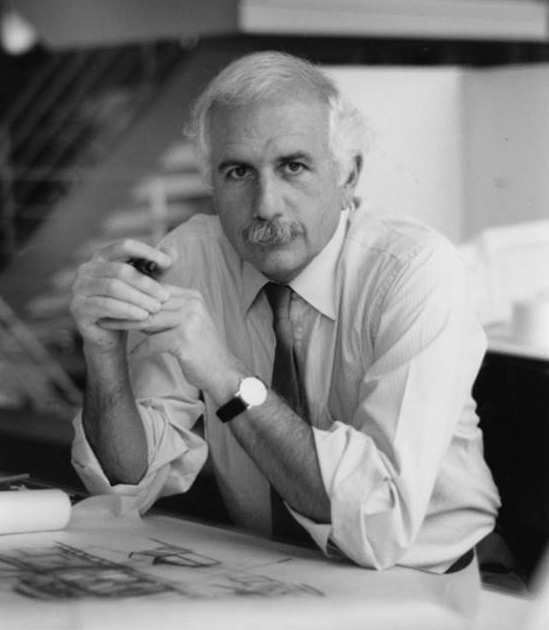 Moshe Safdie.Photo Credit : Norma Gòmez
Moshe Safdie.Photo Credit : Norma Gòmez -
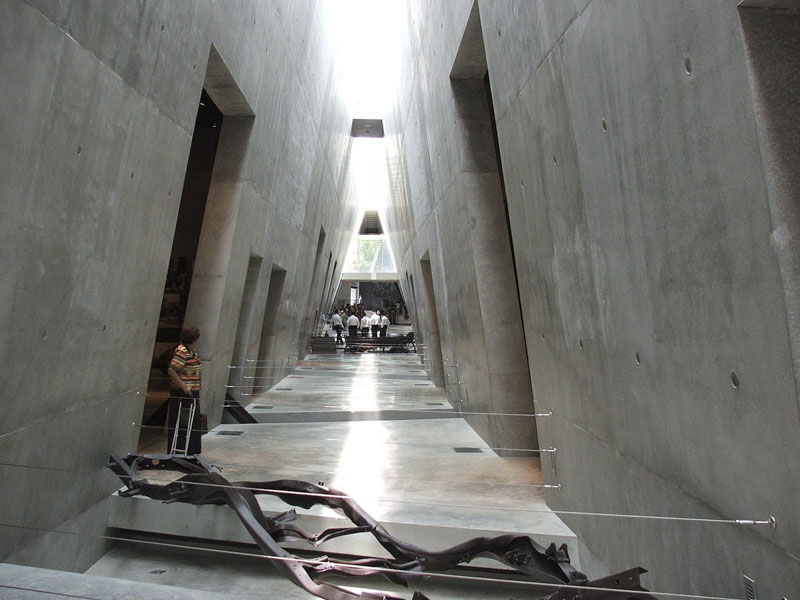 Interior of the Yad Vashem Holocaust Museum, Jerusalem.Photo Credit : Ideasgn
Interior of the Yad Vashem Holocaust Museum, Jerusalem.Photo Credit : Ideasgn -
 Marina Bay Sands Resort, Singapore.Photo Credit : Pegeot
Marina Bay Sands Resort, Singapore.Photo Credit : Pegeot -
 Kauffman Center for Performing Arts.Photo Credit : Kevin Burdette
Kauffman Center for Performing Arts.Photo Credit : Kevin Burdette -
 National Gallery of Canada, Ottawa.Photo Credit : John Talbot
National Gallery of Canada, Ottawa.Photo Credit : John Talbot -
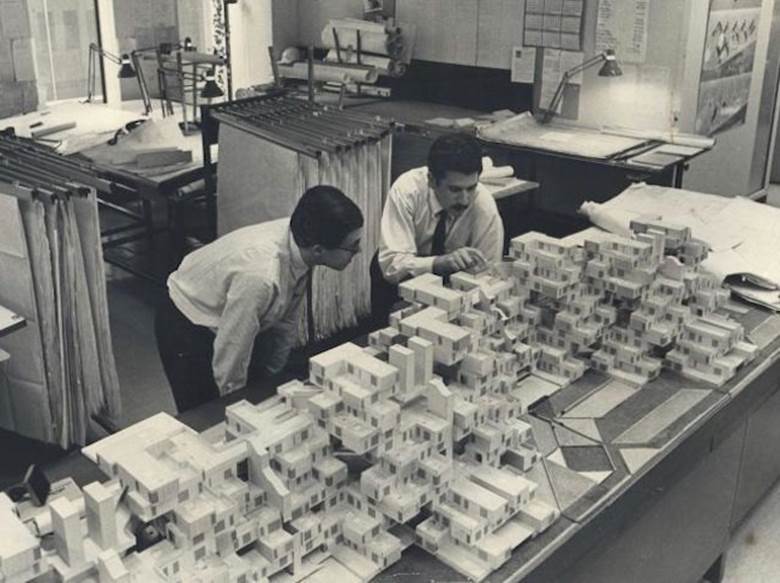 Moshe Safdie working on a model of Habitat 67 which was adapted from his final thesis while studying at McGill University.Photo Credit : Safdie Architects
Moshe Safdie working on a model of Habitat 67 which was adapted from his final thesis while studying at McGill University.Photo Credit : Safdie Architects
Moshe Safdie
Moshe Safdie is an Israeli-Canadian architect who designed Habitat 67: A Lego-like cluster of blocks built as part of Expo 67, that has since become a landmark of architectural modernity.
Born in Haifa, Israel, Safdie moved to Canada with his family as a young man. He studied architecture at McGill University and launched his career in Montreal, developing the Habitat 67 concept as part of his Master’s thesis. After completing the project, he returned to Israel, where he worked on the restoration of Old Jerusalem and the design of the new town of Modi’in.
Today, the architecture firm Safdie Architects has several branch offices in locations including Somerville (Massachusetts), Toronto and Jerusalem. Safdie is the creator of numerous iconic architectural projects around the globe including the Jean-Noël Desmarais Pavilion of Montreal’s Museum of Fine Arts, the new Yad Vashem buildings (Jerusalem Holocaust History Museum) in Israel, the ArtScience Museum in Singapore, and the Salt Lake City Public Library in the United States.
Safdie has taught at McGill, Yale and Ben Gurion University. He has also served as Director of the Urban Design Program and as the Ian Woodner Professor of Architecture and Urban Design at Harvard University Graduate School of Design. He has written several books about his vision for architecture and his projects, including Beyond Habitat (1970), Jerusalem: The Future of the Past (1989) and The City After the Automobile (1997). In 2004, Montreal filmmaker Donald Winkler made a documentary about Moshe Safdie, The Power of Architecture, with the architect’s participation.
In 2009 the Minister of Culture and Communications Christine St. Pierre announced that Habitat 67 would be designated as a historic monument by the Quebec government – the first modern building to receive this distinction.
Over the years, Safdie has been the recipient of many awards and honours, including the Order of Canada and the Gold Medal of the Royal Architectural Institute of Canada. This Israeli-Canadian, who studied in Montreal and launched his career in the city, is today one of the world’s most respected architects.
Special thanks to the Museum of Jewish Montreal.
Learn More:
www.imjm.ca/location/2317
https://vimeo.com/164327577
https://www.ted.com/talks/moshe_safdie_on_building_uniqueness?language=en
https://www.ted.com/talks/moshe_safdie_how_to_reinvent_the_apartment_building?language=en
https://www.youtube.com/watch?v=2zB8XPwbXSY
http://www.cnn.com/videos/style/2016/06/07/spc-the-invitation-moshe-safdie-architecture-singapore.cnn

-

-
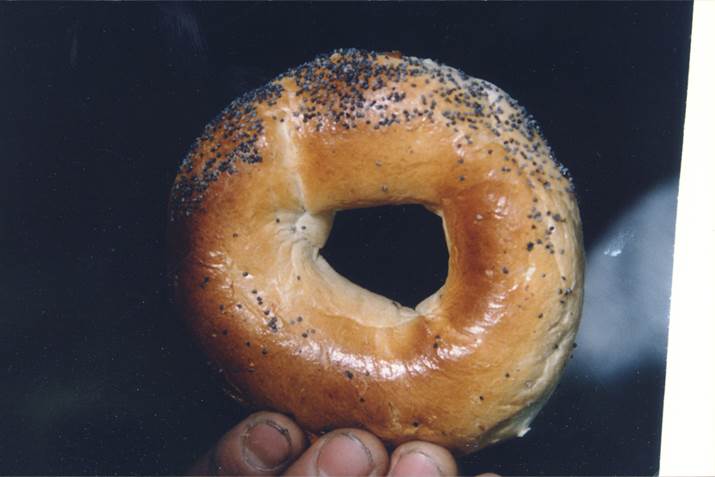 Classic Montreal bagels.Photo Credit : Alex Dworkin Canadian Jewish Archives
Classic Montreal bagels.Photo Credit : Alex Dworkin Canadian Jewish Archives -
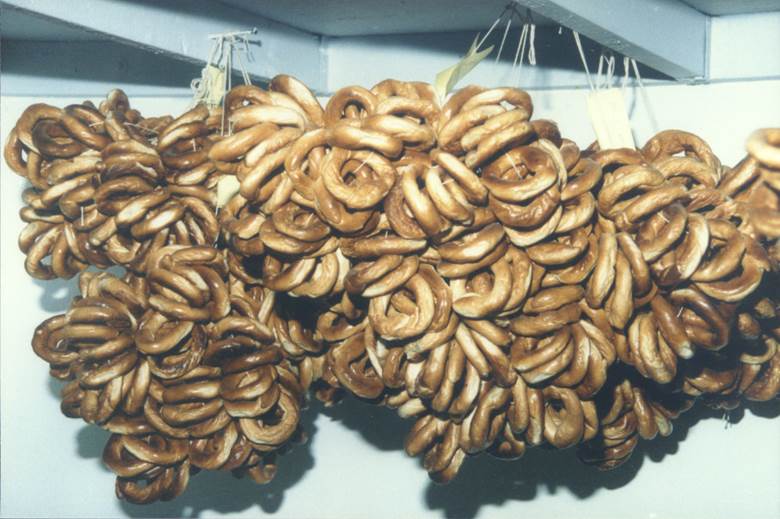 Bagels suspended to cool.Photo Credit : Alex Dworkin Canadian Jewish Archives
Bagels suspended to cool.Photo Credit : Alex Dworkin Canadian Jewish Archives -
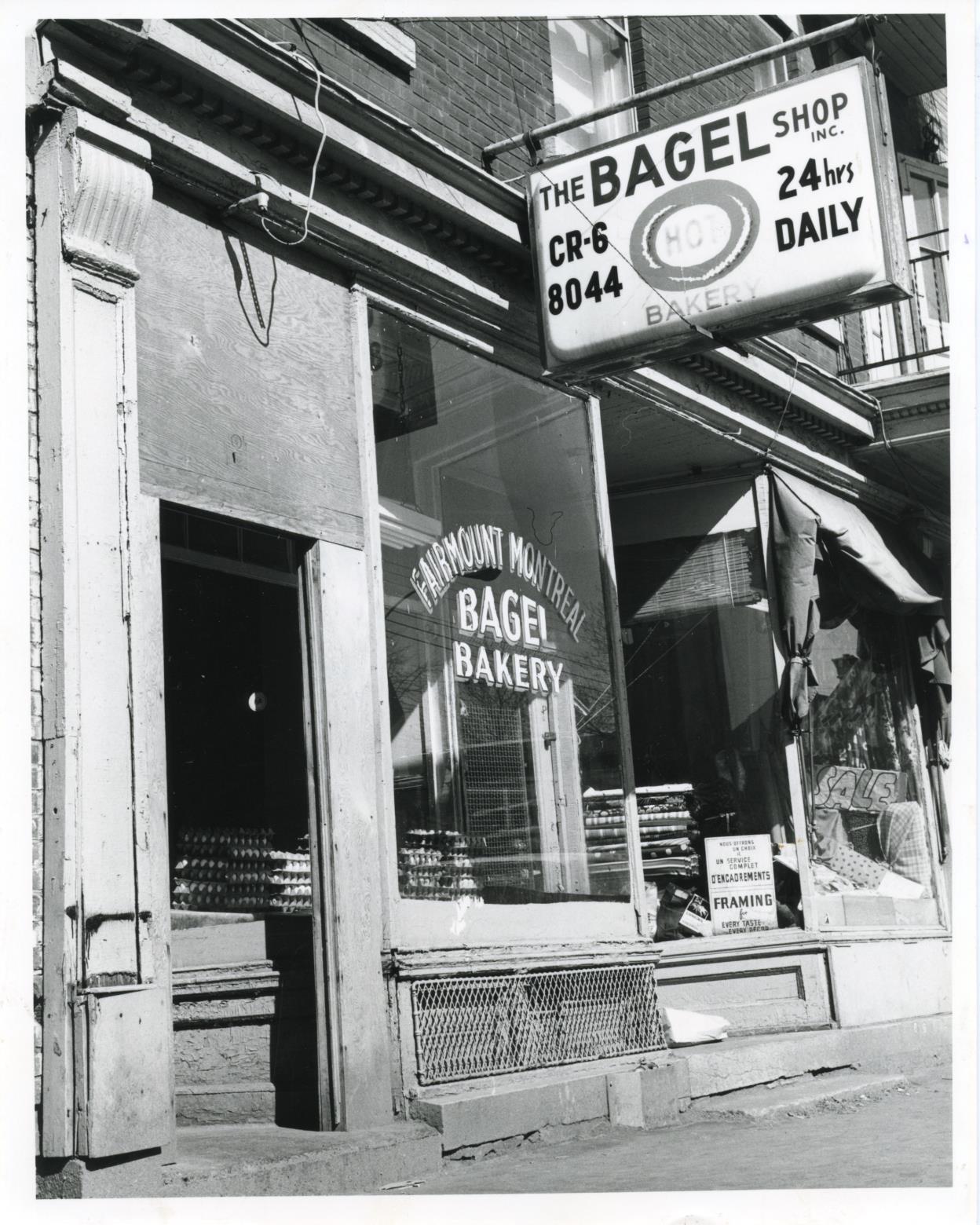 Fairmount Bagel bakery on Fairmount Street, 1977.Photo Credit : Jewish Public Library - Archives
Fairmount Bagel bakery on Fairmount Street, 1977.Photo Credit : Jewish Public Library - Archives -
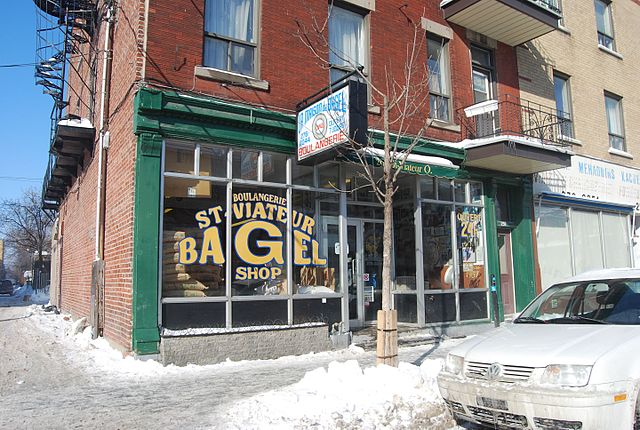 St. Viateur Bagel.Photo Credit : 4net
St. Viateur Bagel.Photo Credit : 4net
The Bagel
Along with smoked meats, the Montreal bagel – smaller, sweeter and with a larger hole than its New York counterpart; traditionally hand-rolled, boiled, baked and sprinkled with sesame or poppy seeds – is an iconic culinary symbol of Montreal Jewry.
While everyone agrees that Eastern European Jewish immigrants brought “beygels” to North America, who actually introduced them to Montreal remains a source of great controversy.
Chaim (Hyman) Seligman is credited by some with having started Montreal’s first bagel bakery. Born in 1878 in Tsarist Russia, Seligman moved to Canada around 1900, eventually settling just off St. Laurent. His bakery had humble roots, with Seligman delivering bagels by horse and wagon, transported the Russian way – strung together by the dozen. No early records of Seligman’s bakery exist, and evidence in directories only points to Seligman’s working for a Montreal bagel bakery in the 1940s and 50s. Seligman may even have been a driver in the late 1930s for another Montreal bagel bakery, owned by Isadore Shlafman and Jacob Drapkin.
Shlafman and Drapkin are also reputed to be the first to introduce bagels to Montreal. Tucked away in the lane at 3835 St. Lawrence, this other Montreal bagel bakery may have opened in 1919, although it only appears in address directories starting in 1932. It served hand-rolled bagels, baked in a wood-fired oven. In 1949, Shlafman moved from St. Lawrence Boulevard to Fairmount Street, where, along with his son, Jack, he expanded his bagel business, known as Fairmount Bagel. It would remain at that location until 1959. Drapkin continued to operate his Montreal bagel bakery on St. Lawrence until 1956.
In 1953, Holocaust survivor Myer Lewkowicz began working for Seligman; he did so until he was able to launch his own bagel business, in 1957. Lewkowicz briefly partnered with Shlafman and the store took on the name Fairmount Bagel, despite its location on St. Viateur. Bagels were not yet a very profitable venture and the partnership dissolved by the early 1960s. That store is now known as St. Viateur Bagel. It was sold by Lewkowicz in the 1990s to his apprentice, Joe Morena. Though Italian, Morena earned the nickname “Yosef” due to his impressive grasp of the Yiddish language. Today’s Original Fairmount Bagel Bakery, which reopened in 1979 at its original location on Fairmount Street, is still managed by Shlafman’s grandchildren.
St. Viateur’s has served a number of famous visitors, including Prince Charles. One busy Saturday night, Morena received an order for 20 dozen bagels for His Royal Highness. Dismissing it as a prank, he admonished the caller, only to be met by a fleet of limousines and a British naval officer coming for his order. The flustered Morena instructed the officer to “get in line like everyone else,” and Prince Charles was eventually rewarded with a taste of Montreal bagels. The Fairmount Bagel Bakery has its own share of notables; in 2008, Montreal-born astronaut Greg Chamitoff, a relative of the Shlafman family, brought Fairmount Bagel bagels with him aboard the space shuttle Discovery.
Special thanks to the Museum of Jewish Montreal.
Learn More:
http://imjm.ca/location/1054
http://stviateurbagel.com/
http://news.bbc.co.uk/2/hi/programmes/world_news_america/8681796.stm
http://www.dacodoc.net/video.php?video=bagels (Short documentary on the Montreal Bagel Wars)
http://www.seligman.org.il/seligman_bagel.html
http://www.forward.com/articles/14502/#ixzz15gkJZ2j2

-
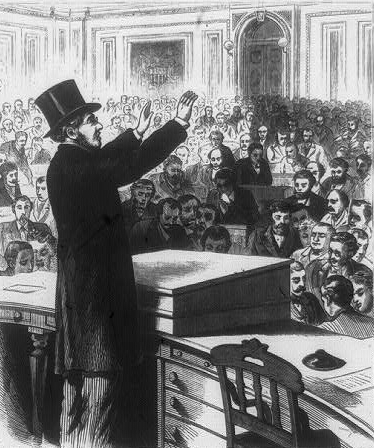 Rabbi Abraham De Sola delivering the opening prayer at US House of Representatives on January 9, 1873.Photo Credit : Public domain
Rabbi Abraham De Sola delivering the opening prayer at US House of Representatives on January 9, 1873.Photo Credit : Public domain -
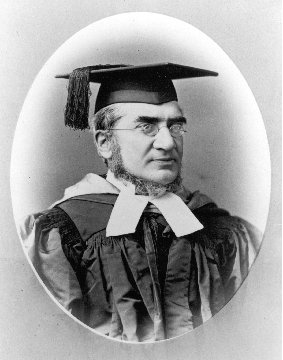 Abraham De Sola was a professor of Hebrew and Oriental Literature at McGill University, and the first Jewish professor in Canada.Photo Credit : Public domain
Abraham De Sola was a professor of Hebrew and Oriental Literature at McGill University, and the first Jewish professor in Canada.Photo Credit : Public domain -
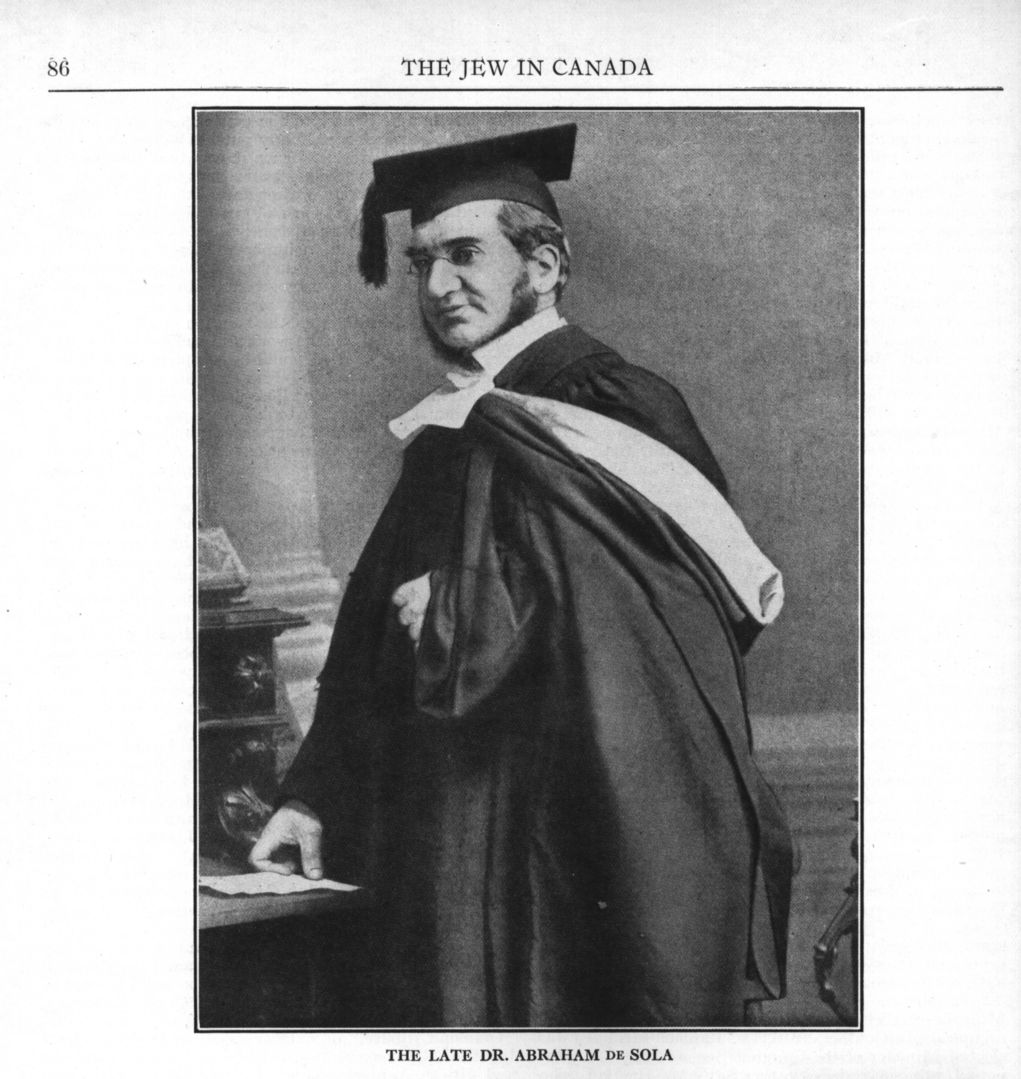 Rabbi Abraham De Sola became the spiritual leader of the Spanish and Portuguese Synagogue in 1846.Photo Credit : Jewish Public Library - Archives
Rabbi Abraham De Sola became the spiritual leader of the Spanish and Portuguese Synagogue in 1846.Photo Credit : Jewish Public Library - Archives
Abraham De Sola
Rabbi Abraham De Sola was the spiritual leader of Montreal’s oldest synagogue, Shearith Israel, as well as the first Jewish professor in Canada.
De Sola was part of a long line of prominent scholars and rabbis. The sixth child of David Aaron De Sola and Rebecca Meldola, he was born in London, where his Spanish and Portuguese relatives had come via Amsterdam in the early 19th century. His maternal grandfather, Dr. Raphael Meldola, was the Chief Rabbi of London’s Sephardic congregation, Bevis Marks Synagogue. His father was an author and hazan in the same congregation. His wife, Esther Joseph, was the daughter of Henry Joseph, the patriarch of one of Canada’s most prominent Jewish families.
De Sola was educated at the City of London Corporation School and received personal instruction from his father and Louis Loewe, a respected Oriental scholar. In 1847, he moved to Montreal after being offered a position at Shearith Israel. He served as the rabbi for this Orthodox Sephardic congregation for the rest of his life. De Sola established their Sunday school and opened a co-ed private Jewish day and boarding school. Despite being part of the Sephardic community, he also maintained close contact with Ashkenazi Jewish communities, and went out of his way to support their schools and organizations, too.
De Sola was a renowned scholar and educator. In 1848, soon after his arrival in Montreal, McGill offered him a job as a lecturer in Hebrew and Oriental literature, subjects which he taught there for the rest of his life, along with courses in Spanish and Philology. De Sola’s interests were eclectic and wide-reaching: botanical and zoological references in the Bible, profiles of prominent Jews, medical studies on rabbinical dietary laws, and the history of the Jewish communities in Persia, England, Poland and France. In 1858, McGill made him an honorary doctor of laws – the first Jewish minister to receive this honour in England or North America.
In addition to being a university professor, de Sola was a frequent speaker at organizations such as the Montreal Mercantile Library Association, the Montreal Literary Club, the Numismatic and Antiquarian Society of Montreal and the Natural History Society, which he was President of from 1867-68. His talks and sermons were often reprinted in Jewish periodicals and the press, including in Isaac Leeser’s The Occident, the first Jewish periodical published in the US. Memorably, at the invitation of President Ulysses S. Grant, de Sola opened the US Congress with prayer in 1873 – the first British subject, and the first Jew, to do so.
As a philanthropist, De Sola was instrumental in founding the Hebrew Philanthropic Society in Montreal to care for the poor, sick and needy, as well to assist recent immigrants. He helped establish the Young Men’s Hebrew Benevolent Society (1863), the Ladies’ Hebrew Benevolent Society (1863) and the Yod Beyod/Jewish Mutual Aid Society (1872). He was also a tireless organizer for relief funds in support of Jews as far afield as Morocco, Persia, Palestine and Russia.
De Sola died in New York City in 1882, while visiting his sister, and was buried in Montreal. His son Clarence was a leading Canadian Zionist, and his son Meldola was a prominent scholar and exponent of Orthodox Judaism in North America. De Sola was admired in Canada and around the world for his prolific work as a spiritual leader, a teacher and a writer. He is remembered as one of his time’s leading Orthodox Jewish voices.
Learn more:
https://en.wikipedia.org/wiki/Abraham_de_Sola
http://www.thecanadianencyclopedia.ca/en/article/abraham-de-sola/
http://imjm.ca/location/1092

Naomi Bronstein
Naomi Bronstein was a strong-willed humanitarian worker and activist credited with saving the lives of over 140,000 children in the developing world – primarily from Vietnam, Cambodia and Guatemala – and helping to open the doors for international adoptions in Canada.
Bronstein was born Naomi Segal in Montreal. Her father was a textile merchant and her family had a comfortable life in Outremont. From a young age, she expressed outrage at the injustices faced by impoverished, sick and/or orphaned children. At just 17, she married Herbert Bronstein, a knitting mill sales manager who was also highly idealistic. They raised 12 children together, 7 of whom were adopted (from Vietnam, Cambodia, Ecuador and Canada). Through her tireless activism, Bronstein ultimately helped 650 other children also find adoptive families in Europe and North America.
Bronstein’s work with international adoptions began in the 1960s. After having three biological children, she and her husband started looking into adopting a fourth child, and were dismayed by the conditions of orphanages in the developing world, and the bias against international adoptions in Montreal. She began working with war orphans in Vietnam and helped organize “Operation Baby-Lift,” to transport over 100 of them to families in North America. Tragically, the cargo plane crashed shortly after takeoff, killing everyone on board. Bronstein was supposed to have been on the plane, but gave up her seat at the last second.
This traumatic event only solidified Bronstein’s commitment to aiding children around the world. During Cambodia’s brutal civil war, she opened an orphanage in Phenom Penh called Canada House. Following a devastating earthquake, Bronstein established Casa Canada in Guatemala City, which provided medical care for poor children. Back in Ottawa, she worked with Healing the Children Canada, an agency that provided specialized medical care in North America for children from the developing world. At the time of her untimely death from heart problems, at 65, she was living in Guatemala and working out of a bus that had been converted into mobile medical units.
Bronstein was awarded the Order of Canada in 1983. La Presse chose her as a “Person of the Year” in 1985. In 1997, she was awarded the Royal Bank of Canada’s $250,000 humanitarian award (she donated the prize money to humanitarian causes). A documentary about her work in Vietnam, called A Moment in Time: The United Colours of Bronstein, was released in 2001 and received a nomination for a Gemini Award that same year.

